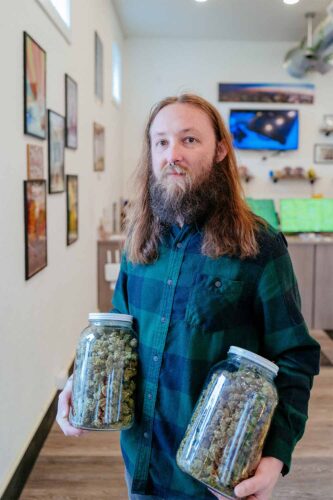
When you consume cannabis, you might not be thinking about relatively boring effects like anti-inflammatories and sleep aids. When you partake, you might mostly think about THC, the main psychoactive component of the drug. After all, it is this element in cannabis that makes the user high and, after all this time, is probably the average person’s association with weed and its brethren.
Not so fast. In addition to recreational usage, cannabis may help with other factors, such as pain and anxiety. THC (tetrahydrocannabinol) is not the only component that does this. CBD, which stands for cannabidiol, is another phytocannabinoid of the drug.
According to the Centers for Disease Control and Prevention (CDC), CBD is marketed in many consumer products, including foods, oils, lotions, capsules and even cosmetics. In addition, in 2018, the U.S. Food and Drug Administration (FDA) approved Epidiolex, a medicine containing purified CBD from hemp, which can help treat rare seizure disorders.
According to the CDC, hemp is any part of the Cannabis sativa plant that contains no more than 0.3 percent of THC.
“What makes it different is genetic capability of the plant to produce a particular type of cannabinoid in the plant,” says Strat Noller, professor emeritus at Oregon State University and founder and former director of the Global Hemp Innovation Center. He adds that in order to be compliant in the United States, hemp must have about 20 to 23 times more CBD than THC.
CBD does not make a user high. But, according to many users, it can help with relaxation, reduce anxiety and other factors. Some methods for ingesting CBD include edibles, such as gummies, tinctures and, of course, smoking cannabis. When smoking, CBD is often combined with THC, as many want that “high” effect that comes with THC. However, CBD can be effective by itself as well.
“What CBD does, from what we’ve found, is mostly anti-inflammatory,” says Galen Huber, the manager of Apothca in Eugene. “So, it works comparatively like ibuprofen.”
CBD’s anti-inflammatory effects can be used by some as a sleep aid.
“It can promote sleepiness,” says Cory Winder, one of the managers at Next Level Wellness in Eugene. “But it is further promoting sleepiness by relaxing your muscles and further just allowing your body to alleviate stress.” He added that another cannabinoid, CBN, has a more direct effect on helping people sleep.
When paired together, CBD and THC produce what is called an entourage effect. This consists of positive effects that people experience from the mixing of various compounds in cannabis. In this case, the combination of CBD’s anti-inflammatory effects and THC’s psychoactive high can help people relax. This entourage effect, in turn, can help improve sleep.
“They can then handle something like social stresses a little easier,” Huber says. He adds that a healthy balance of CBD and THC can help him prevent panic attacks.
CBD’s effects may not happen all at once, though. According to Melissa Lieberman, assistant manager of Holy Grail Pharms in Eugene, CBD will always work best when used over time.
“It might not be instant results,” Lieberman says. “But, if you give it a week and consistently use it, it should definitely start to help.” She added that if people don’t want to use THC in combination with CBD, she recommends using CBN (cannabinol) with CBD as a substitute for helping improve sleep. Unlike CBD, CBN can be mildly psychoactive.
Huber often takes CBD and THC combined, but he takes a break every year to “cleanse” his tolerance of THC and smokes only CBD. He may not get that high, but he still feels satisfaction.
“It’s a ritual, and I love that ritual,” he says of smoking the CBD flower.
CBD is not without its risk factors, though. According to the CDC, some potential harms and side effects include liver damage, interference with other drugs, drowsiness or sleepiness, diarrhea, changes in appetite and changes in mood. More research needs to be done to examine CBD’s effects, both positive and negative. ν